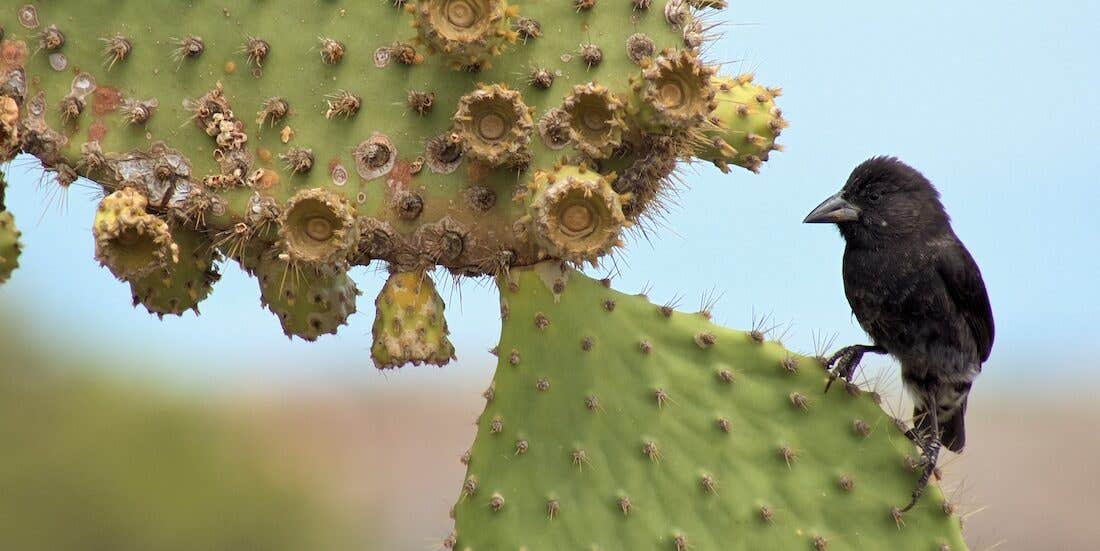Macroevolution: Scientists unlock new secrets of evolution
Since Charles Darwin’s theory of evolution, biologists have been dissecting the intricate mechanisms that drive change in species.

Since Charles Darwin's theory of evolution, biologists have been dissecting the intricate mechanisms that drive change in species. A central question is whether the processes responsible for rapid evolution within a few generations (microevolution) can explain transformations over vast stretches of time (macroevolution).
A recent study published in Science bridges this gap by demonstrating how a population's ability to evolve rapidly (evolvability) predicts its long-term divergence. The researchers analyzed massive datasets from living organisms and fossils, revealing a strong link between evolvability and the degree of change observed between populations and species separated by millions of years.
Evolvability: The Engine of Change
Evolvability refers to a population's capacity to adapt through heritable variation. The researchers compiled data on evolvability for various traits (beak size, offspring number, flower size) in living populations and species.
They then compared this data to the divergence of these traits between populations and species. Additionally, they examined 150 fossil lineages where researchers had measured morphological changes over timescales ranging from 10 years to 7.6 million years.
The analysis revealed a clear pattern: traits with higher evolvability exhibited greater divergence among existing populations and species. Similarly, in the fossil record, these traits showed a higher degree of difference between consecutive fossil samples. Conversely, traits with lower evolvability displayed minimal change across populations and fossil sequences.
Environmental Fluctuations Drive Divergence
According to Professor Christophe Pélabon, from NTNU’s Department of Biology, the senior author of the study, traits with high evolvability are more responsive to environmental changes, leading to rapid evolution.
Environments are constantly fluctuating, with factors like temperature and food availability impacting survival and reproduction. Populations constantly adapt to these changing environments.
Related Stories
Highly evolvable traits respond swiftly to these fluctuations, exhibiting larger shifts over time. Conversely, traits with low evolvability fluctuate slowly and to a lesser extent.
Geographical separation further amplifies this effect. Populations far apart experience distinct environmental fluctuations, leading to divergent trait values. The extent of this difference is directly proportional to the trait's evolvability and the amplitude of its fluctuations.
Implications for Biodiversity in a Changing World
The study suggests a relatively stable selection pressure (environmental influence) in the past. However, with rapid climate change pushing environments in a single direction, selection pressures are likely to become more intense and unidirectional. This may significantly impact how species adapt to environments that continue to fluctuate, but around shifting optima that are no longer stable even over short timeframes.
"The ability of species to track these moving optima and adapt remains uncertain, but it will likely have consequences for biodiversity, potentially even in the short term," concludes Pélabon.
This research sheds light on the link between micro and macroevolution, highlighting evolvability as a key factor shaping long-term divergence. As our environment undergoes unprecedented change, understanding the role of evolvability becomes crucial for predicting the fate of biodiversity.
Darwin's Theory of Evolution
Charles Darwin's theory of evolution, expounded in his seminal work "On the Origin of Species" published in 1859, revolutionized our understanding of the natural world. At its core, Darwin's theory posits that species evolve over time through a process of natural selection, driven by the struggle for existence and the differential survival and reproduction of individuals with advantageous traits.
Darwin observed that populations have the potential to grow exponentially, yet they tend to remain relatively stable in size. This discrepancy led him to propose the concept of a "struggle for existence," wherein individuals within a population compete for limited resources such as food, shelter, and mates. Those individuals with traits that confer an advantage in this struggle are more likely to survive and reproduce, passing on these advantageous traits to their offspring.
Darwin recognized that individuals within a population exhibit variation in traits, which he attributed to both genetic and environmental factors. This variation is essential for natural selection to operate, as it provides the raw material upon which selective pressures can act.
Traits that enhance an individual's survival and reproductive success in a given environment are more likely to be passed on to future generations, gradually leading to the accumulation of favorable traits within a population over successive generations.
Darwin proposed the mechanism of natural selection as the primary driver of evolutionary change. Natural selection occurs when individuals with certain advantageous traits have higher rates of survival and reproduction than those without these traits, leading to the gradual increase in frequency of those traits within the population.
Over time, this process can result in the adaptation of populations to their environments, as individuals with traits better suited to their surroundings are more likely to thrive and pass on their genes.
Darwin emphasized the role of descent with modification, highlighting that all species are related through common ancestry. According to his theory, new species arise through the gradual accumulation of small changes over long periods of time, eventually leading to the divergence of populations and the formation of distinct species. This concept challenged prevailing notions of fixed species and provided a unifying framework for understanding the diversity of life on Earth.
Finally, Darwin's theory of evolution by natural selection has been supported and expanded upon by a wealth of empirical evidence from various fields, including paleontology, comparative anatomy, embryology, and molecular biology. It remains one of the most robust and widely accepted explanations for the diversity of life, providing profound insights into the processes shaping the natural world.
For more science and technology stories check out our New Discoveries section at The Brighter Side of News.
Note: Materials provided above by The Brighter Side of News. Content may be edited for style and length.
Like these kind of feel good stories? Get the Brighter Side of News' newsletter.



